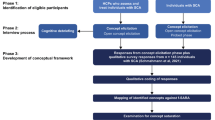Abstract
Patients affected by amyotrophic lateral sclerosis (ALS) show specific dysarthria in their speech resulting in specific marks which could be used to detect early symptoms and monitor the evolution of the disease in time. Classically articulation marks have been mainly based on static premises. Articulation kinematics from acoustic correlates may help in producing measurements depending on the dynamic behaviour of speech. Specifically, distribution functions from the absolute kinematic velocity estimated on a simplified articulation model can be used in establishing distances based on information theory concepts between running speech segments from patients and controls. As an example, several cases of ALS were studied longitudinally using this methodology. The study shows that the performance of dynamic articulation quality correlates may be sensitive and robust in tracking illness progress. Conclusions foresee the use of speech as a valuable monitoring methodology for ALS timely neurodegenerative progression.








Similar content being viewed by others
References
Yunusova Y, Weismer G, Westbury JR, Lindstrom MJ (2008) ‘Articulatory movements during vowels in speakers with dysarthria and healthy controls. J Speech Lang Hear Res 51(3):596–611
Green JR, Yunusova Y, Kuruvilla MS, Wang J, Pattee GL, Synhorst L, Zinman L, Berry JD (2013) Bulbar and speech motor assessment in ALS: challenges and future directions. Amyotroph Lateral Scler Frontotemporal Degener 14(7–8):494–500
Morello G, Spampinato AG, Conforti FL, D’Agata V, Cavallaro S (2017) Selection and prioritization of candidate drug targets for amyotrophic lateral sclerosis through a meta-analysis approach. J Mol Neurosci 61(4):563–580
Tran V, Lam MK, Amon KL, Brunner M, Hines M, Penman M, Lowe R, Togher L (2017) Interdisciplinary eHealth for the care of people living with traumatic brain injury: a systematic review. Brain Inj 31:13–14
Sapir S, Ramig LO, Spielman JL, Fox C (2010) Formant centralization ratio: a proposal for a new acoustic measure of dysarthric speech. J Speech Lang Hear Res 53(1):114–125
Gómez-Vilda P, Londral A, Rodellar-Biarge V, Ferrández-Vicente JM, Carvalho M (2015) Monitoring amyotrophic lateral sclerosis by biomechanical modeling of speech production. Neurocomputing 151(1):130–138
Yunusova Y, Green JR, Lindstrom MJ, Pattee GL, Zinman L (2013) Speech in ALS: longitudinal changes in lips and jaw movements and vowel acoustics. J Med Speech Lang Pathol 21(1):1–13
Dromey C, Jang GO, Hollis K (2013) Assessing correlations between lingual movements and formants. Speech Commun 55(2):315–328
Sanguineti V, Laboissiere R, Payan Y (1997) A control model of human tongue movements in speech. Biol Cybern 77(1):11–22
Hannam AG, Stavness I, Lloyd JE, Fels S (2008) A dynamic model of jaw and hyoid biomechanics during chewing. J Biomech 41(5):1069–1076
Bouchard KE, Conant DF, Anumanchipalli GK, Dichter B, Chaisanguanthum KS, Johnson K, Chang EF (2016) High-resolution, non-invasive imaging of upper vocal tract articulators compatible with human brain recordings. PLoS ONE 11(3):e0151327. https://doi.org/10.1371/journal.pone.0151327
NIST/SEMATECH e-Handbook of statistical methods. http://www.itl.nist.gov/div898/handbook/
López-de-Ipiña K, Alonso JB, Solé-Casals J, Barroso N, Henriquez P, Faundez-Zanuy M, Travieso CM, Ecay-Torres M, Martínez-Lage P, Eguiraun H (2015) On automatic diagnosis of Alzheimer’s disease based on spontaneous speech analysis and emotional temperature. Cognit Comput 7(1):44–55
Cover TM, Thomas JA (2012) Elements of information theory. Wiley, Hoboken
Deller JR, Proakis JG, Hansen JHL (1993) Discrete-time processing of speech signals. Prentice-Hall, Englewood Cliffs
Webb AR (2003) Statistical pattern recognition. Wiley, Hoboken
Cedarbaum JM, Stambler N, Malta E, Fuller C, Hilt D, Thurmond B, Nakanishi A (1999) The ALSFRS-R: a revised ALS functional rating scale that incorporates assessments of respiratory function. J Neurol Sci 169(1–2):13–21
Sartucci F, Bocci T, Briscese L, Pecori C, Rossi C, Giannini F (2012) How to assess disease’s severity and monitor patients with amyotrophic lateral sclerosis: lessons from neurophysiology. In: Maurer M (ed) InTech Europe, pp 613–626
Lin J (1991) Divergence measures based on shannon entropy. IEEE Trans Inf Theory 37(1):145–151
Proença J, Veiga A, Candeias S, Lemos J, Januário C, Perdigão F (2014) Characterizing Parkinson’s disease speech by acoustic and phonetic features. Lecture Notes Artif Intell 8775:24–35
Petrov D, Mansfield C, Moussy A, Hermine O (2017) ALS clinical trials revies: 20 years of failure. Are we any closer to registering a new treatment? Front Aging Neurosci 9:68
Acknowledgments
This work was supported by Calouste Gulbenkian Foundation and the Portuguese Association of ALS (APELA), as well as by Grant TEC2016-77791-C4-4-R (Plan Nacional de I + D+i, Ministry of Economic Affairs and Competitiveness of Spain).
Author information
Authors and Affiliations
Corresponding author
Ethics declarations
Conflict of interest
The authors declare that this research has been conducted according to the Helsinki Declaration on ethical standards, it has been carried on public or non-profit funding, and they do not have any conflict of interest regarding the research objectives, procedures and results.
Rights and permissions
About this article
Cite this article
Gómez, P., Londral, A.R.M., Gómez, A. et al. Monitoring ALS from speech articulation kinematics. Neural Comput & Applic 32, 15801–15812 (2020). https://doi.org/10.1007/s00521-018-3538-6
Received:
Accepted:
Published:
Issue Date:
DOI: https://doi.org/10.1007/s00521-018-3538-6




